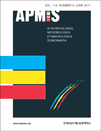Antimicrobial effect of adjunctive use of chlorhexidine mouthrinse in untreated gingivitis: a randomized, placebo-controlled study
Abstract
Becerik S, Türkoğlu O, Emingil G, Vural C, Özdemir G, Atilla G. Anti-microbial effect of adjunctive use of chlorhexidine mouthrinse in untreated gingivitis: a randomized, placebo-controlled study. APMIS 2011; 119: 364–72.
The aim of this study was to examine the effectiveness of chlorhexidine mouthrinse (CHX) in addition to daily plaque control on subgingival microbiota in patients with untreated gingivitis. Fifty gingivitis patients were randomized to CHX or placebo groups. CHX group rinsed with 0.2% CHX, while placebo group rinsed with placebo mouthrinse for 4 weeks. Subgingival plaque samples were collected and plaque index (PI), papilla bleeding index (PBI), calculus index, and probing pocket depth (PPD) were recorded at baseline and at 4 weeks. The amounts of Aggregatibacter actinomycetemcomitans, Porphyromonas gingivalis, Prevotella intermedia, Tannerella forsythia, Fusobacterium nucleatum, and total bacteria were detected by quantitative real-time PCR method. In the CHX group the total bacteria count was significantly reduced in posterior teeth at 4 weeks (p < 0.05), while no significant decrease was observed in the placebo group (p > 0.05). CHX mouthrinse as an adjunct to daily plaque control could be useful in the management of plaque-associated gingivitis and in reducing the subgingival total bacteria count especially in posterior teeth.




